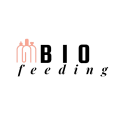Transitioning from Breastfeeding to Bottle Feeding Comfortably
Starting your baby on bottle feeding can be a challenge, especially after they have gotten used to breastfeeding. The transition requires patience, adaptation, and a whole lot of love. But rest assured, by following some tried and true tips, you can make bottle feeding a comfortable experience for both you and your baby.
Understanding Your Baby’s Feeding Habits
Every baby is different and has unique feeding habits. Understanding your baby’s feeding habits will help make the transition smoother. It involves noting the time they usually feed, the quantity they consume, their behaviour during feeds, and paying attention to their hunger signals.
Tips for a Smooth Transition to Comfy Bottle Feeding
The transition from breastfeeding to bottle feeding comfortably doesn’t have to be hard. You just need to follow some key steps:
– Introducing the bottle gradually: Start by replacing one breastfeeding session with a bottle feed. Do this until your baby gets used to the bottle.
– Choosing the right bottle and nipple: Choose a bottle with a nipple that resembles a mother’s breast to make the transition easier.
– Mimic the breastfeeding experience: Hold your baby close and maintain eye contact during bottle feeds, just like you do while breastfeeding. This helps make the bottle feeding experience more comfortable and familiar for your baby.
These are just a few tips for a smooth transition. For more in-depth advice, check out our comprehensive article on how to transition from breastfeeding to bottle feeding comfortably.
Dealing with Common Bottle Feeding Challenges
Switching to bottle feeding can bring some challenges, but they are all manageable with the right know-how:
– Baby rejecting the bottle: If your baby rejects the bottle at daycare or when they’re with someone else, it might be because they miss the comfort of breastfeeding. Try to gradually introduce bottle feeding while you’re still around. For more useful tips on this, you can read our guide on what to do when your baby rejects the bottle at daycare.
– Feeding positions: Just like with breastfeeding, the right feeding position can make bottle feeding comfortable and efficient. Check out this helpful guide on optimal feeding positions by NHS.
– Sore nipples from bottle feeding: Though less common than with breastfeeding, bottle feeding can also result in sore nipples. NHS provides a useful resource on how to avoid sore nipples that you might find helpful.
By understanding these potential issues, you can be better prepared and thus ensure comfortable feeding for both you and your baby.
Maintaining a Bottle Feeding Schedule
Once you have started bottle feeding, maintaining a regular schedule is essential. A predictable feeding routine helps your baby feel secure and fosters healthy eating habits.
A feeding schedule is not a one-size-fits-all concept. Every baby is different and so are their feeding needs. However, our article on creating a breastfeeding to bottle feeding schedule offers a good starting point.
Remember, the transition to comfy bottle feeding is a process that may require some trial and error. But with patience and consistency, you can make it a comfortable experience for both you and your baby.
Choosing the Right Time to Transition
Determining the right time to transition from breastfeeding to bottle feeding is essential. Most experts suggest exclusively breastfeeding for the first six months is ideal, but this could vary for each family. The CDC’s Breastfeeding Report Card provides more insights on breastfeeding rates and durations in the U.S.
Factors such as mother’s convenience, baby’s acceptance, and health considerations play crucial roles in deciding the right time to transition. For babies who have spent time in the Neonatal Intensive Care Unit (NICU), the transition can come earlier or later, depending on their health, weight, and ability to latch. More information is available on how to feed your baby after NICU.
Choosing the Best Bottles for Transition
Choosing a bottle that mimics a mother’s breast can significantly ease the bottle-feeding transition. Such bottles help to retain the feeding experience for your baby. A type of nursing pillow like the My Brest Friend Nursing Pillow can also make your baby feel comfortable and close to you as you would during breastfeeding.
Also, consider a bottle that is easy to clean and reduces air ingestion, which can cause gas and discomfort. With the right bottle and care, the transition from breastfeeding to bottle feeding can be made smoother.
Making Bottle Feeding Engaging
Just like breastfeeding, bottle feeding offers a beautiful bonding opportunity with your child. Maintain eye contact, sing lullabies, and engage in soothing talks while feeding your baby. This engagement can make the process enjoyable and reduce any emotional stress related to the shift from breastfeeding.
Role of Caregivers in Transition
During the transition from breastfeeding to bottle feeding, caregivers play a crucial role. Having caregivers bottle feed your baby can ease the transition. Babies associate their mothers with breastfeeding and often resist if mothers introduce them to the bottle. If caregivers, like fathers or grandparents, introduce the bottle, babies are more likely to accept the new feeding method easily.
Baby-led Weaning and Transition
Baby-led weaning is a method where babies are encouraged to feed themselves – starting with their fingers and eventually leading to utensils. If your baby has started solids and is following baby-led weaning, this could make the transition to the bottle easier. When your baby is in control of what goes into their mouths, they feel more comfortable trying new things, like a bottle.
Conclusion
Transitioning from breastfeeding to bottle feeding comfortably is indeed a journey. It requires patience, understanding, and sometimes a little bit of trial and error. However, with the right knowledge and support, it can be a joyful experience for both you and your baby. You can find more practical tips on how to bottle feed your baby at NCT.
Whilst the process might seem daunting, it leaves you with precious memories and moments of your baby’s growth and the transition phases they go through. Remember, every baby is unique, so follow their cues and comfort level for a stress-free transition.

